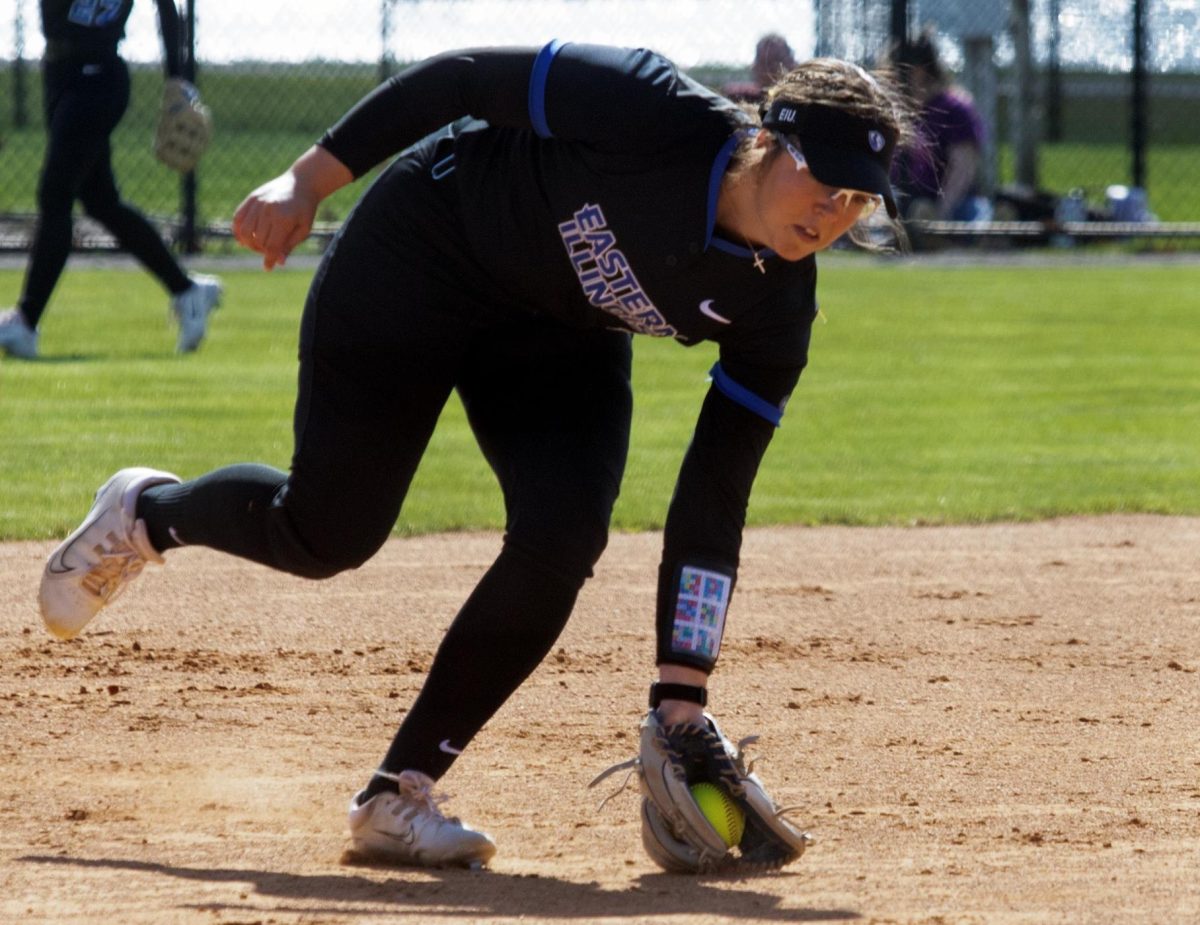HERC discusses bystander intervention at session
January 23, 2019
The Health Education and Resource Center discussed bystander intervention during the open session called “EIU StepsUp” Wednesday afternoon at the Martinsville Room of the Martin Luther King Jr. University Union.
The objective of the open session was to educate attendees about effectively intervening during problem and emergency situations.
Lindsey Eigsti, nutrition promotion coordinator at HERC, led the open session and said bystanders always have the option to either ignore the problem at hand or step up and help.
She said there are five steps to effective bystander intervention: notice the event, interpret the event as a problem or an emergency, assume personal responsibility, know how to help and implement the help.
First, she said it is important for bystanders to be aware of what is happening around them.
If something potentially bad is happening, a bystander needs to survey their surroundings and the situation, Eigsti said.
Second, after the situation has been acknowledged, then it is time to determine whether the situation is just a “problem” or an “emergency,” she said.
An emergency, in the context of bystander intervention, is best described as a situation in which one or more peoples’ lives could be in danger and someone needs to get help, she said.
A problem situation is still negative, but it is far less severe than an emergency and can be resolved over a longer course of time, she said.
After the situation is determined to be an emergency or a problem, then the bystander needs to take action to get the person the right kind of help, she said.
Sometimes, the best way to intervene is to call police for help, Eigsti said.
The bystander effect can reduce the chances of someone stepping up to help another person in a problem situation, she said.
Regarding bystander effect, according to HERC’s newsletter, research shows that “people are less helpful or heroic in situations than they think they will be,” and 80 percent of people act on situations when they are alone while only 20 percent act when there are others around them.
The reason bystanders choose not to intervene in problem situations is because of “barriers,” Eigsti said.
The first barrier she mentioned was “ambiguity,” which Eigsti said could be described as people having different perspectives for different problem situations.
“We assess situations through our own lens, so you and I might look at a situation totally differently, whether it be a domestic violence situation or even a public intoxication situation,” she said.
For example, if someone grew up in a violent household, that person might be less likely to intervene during a situation in which a family member was abusing their child while another person with a different background might step up and intervene, she said.
Another barrier that gets in the way is “pluralistic ignorance,” she said, which is defined as someone’s decision to not intervene because no one else around them is intervening.
In case of an emergency, The Charleston Police and University Police are valid resources to contact, she said, and they exist to keep Eastern safe, Eigsti said.
The Good Samaritan Law, she said, protects underage drinkers who call the police for help when an intoxicated person, above or below 21, needs help.
With this law in place, there is no reason for a student to neglect to call police if someone intoxicated is in danger, even if the person calling or anyone in the situation is underage drinking, she said.
The HERC is hosting another “EIU StepsUp” open session on Jan. 29 at 10 a.m. in the Martinsville Room of the Union.
Logan Raschke can be reached at 581-2812 or at lrraschke@eiu.edu.














![[Thumbnail Edition] Charleston High School sophomore Railyn Cox pitches the ball during Charleston's 8-7 win over Flora High School on Monday, March 31.](https://www.dailyeasternnews.com/wp-content/uploads/2025/04/SBHS_01_O-1-e1743982413843-1200x1023.jpg)

![[Thumbnail Edition] Senior Foward Macy McGlone, getsw the ball and gets the point during the first half of the game aginst Western Illinois University,, Eastern Illinois University Lost to Western Illinois University Thursday March 6 20205, 78-75 EIU lost making it the end of their season](https://www.dailyeasternnews.com/wp-content/uploads/2025/03/WBB_OVC_03_O-1-e1743361637111-1200x614.jpg)













![[thumbnail edition] Assistant Coach of the Linebackers, Rodman Noel talking to the linebackers about their positions at O'Brien Field on the Eastern Illinois University campus, Charleston Ill.](https://www.dailyeasternnews.com/wp-content/uploads/2025/04/FB_24_O-1-e1744671213207-1200x609.jpg)
![[THUMBNAIL EDITION] (From left to right) Head football coach Chris Wilkerson works with his son student assistant coach Peyton Wilkerson at football practice at O'Brien Field on the Eastern Illinois University campus on Thursday.](https://www.dailyeasternnews.com/wp-content/uploads/2025/04/FB_25_O-1-e1744234837107-1200x596.jpg)








































